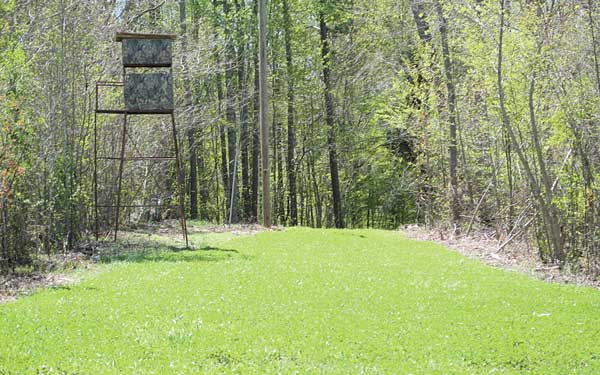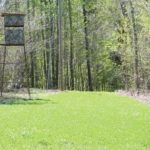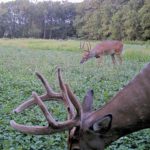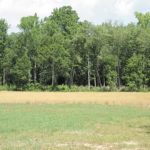
As autumn settles in across the Carolinas, recently-planted seeds emerge from broken soil and begin their journey upward towards the sun, carrying nutrient packages for passing wildlife.
Wildlife managers have already invested loads of time and money preparing the soil, choosing the right seed mix and waiting for optimum conditions to arise to bury the seeds.
In fact, covering the precious seeds with a light layer of soil marks the end of the food-plot preparation cycle before deer season is in full swing. October is prime time for wildlife managers to see the greening plots and fruits of their labor.
Sometimes, determining success can be difficult when plots appear not to be growing to their expected level. As with any new crop, establishing successful food plots greatly depends on hydration, emerging weed competition and foraging intensity. Frequent travel to and from food plots should be discouraged to prevent tainting of the overall objective; drawing “big boy” and his ladies near.
All plants require adequate water to convert the sun’s energy into food molecules and to transpire, trading water molecules for carbon dioxide. After planting, food plots are at the mercy of nature to provide them with adequate rainfall. However, too much water rots the roots away, starving the plant. Monitor the standing water in the lower-lying areas across a food plot and take action to drain off the excess with small hand-installed drains. Small drainage trenches are easily installed with a shovel or the edge of a tractor blade.
With any newly-plowed, pH-balanced, and fertilized field, weeds easily establish themselves — even when pre-treatment weed control was used before planting. Generally, cool-season food plot mixes are intolerant of selective herbicides, which forces food plot managers to look beyond the weeds and using herbicides to control them post-planting.
Fortunately, October brings cooler temperatures and usually the first freezes, shutting down the cold-intolerant weed species. Although weeds crowd the food plot, providing competition for the planted seed, some weed plants are favored by wildlife in their young, tender state and are generally accepted to join the party in cool-season plots.
The most common problem with realizing the success of a food plot is heavy foraging. While deer and other wildlife are fully expected to munch away at the moist and tender food supplies, early browsing can make a food plot appear to be unsuccessful.
Marion Barnes, a Clemson University wildlife extension agent in Colleton Co., recommends using “exclosures” or wire cages placed in food plots to protect grazing/browsing in a small area.
“In areas with high deer densities, deer will graze the newly emerged plants close to the ground. Most hunters are surprised to see the difference between the growth in the two areas,” Barnes said.
With hunting season beginning in one form or another, properly prepared food plots will provide a hunting opportunity and a sustainable fall/winter crop for deer and other wildlife.







Be the first to comment